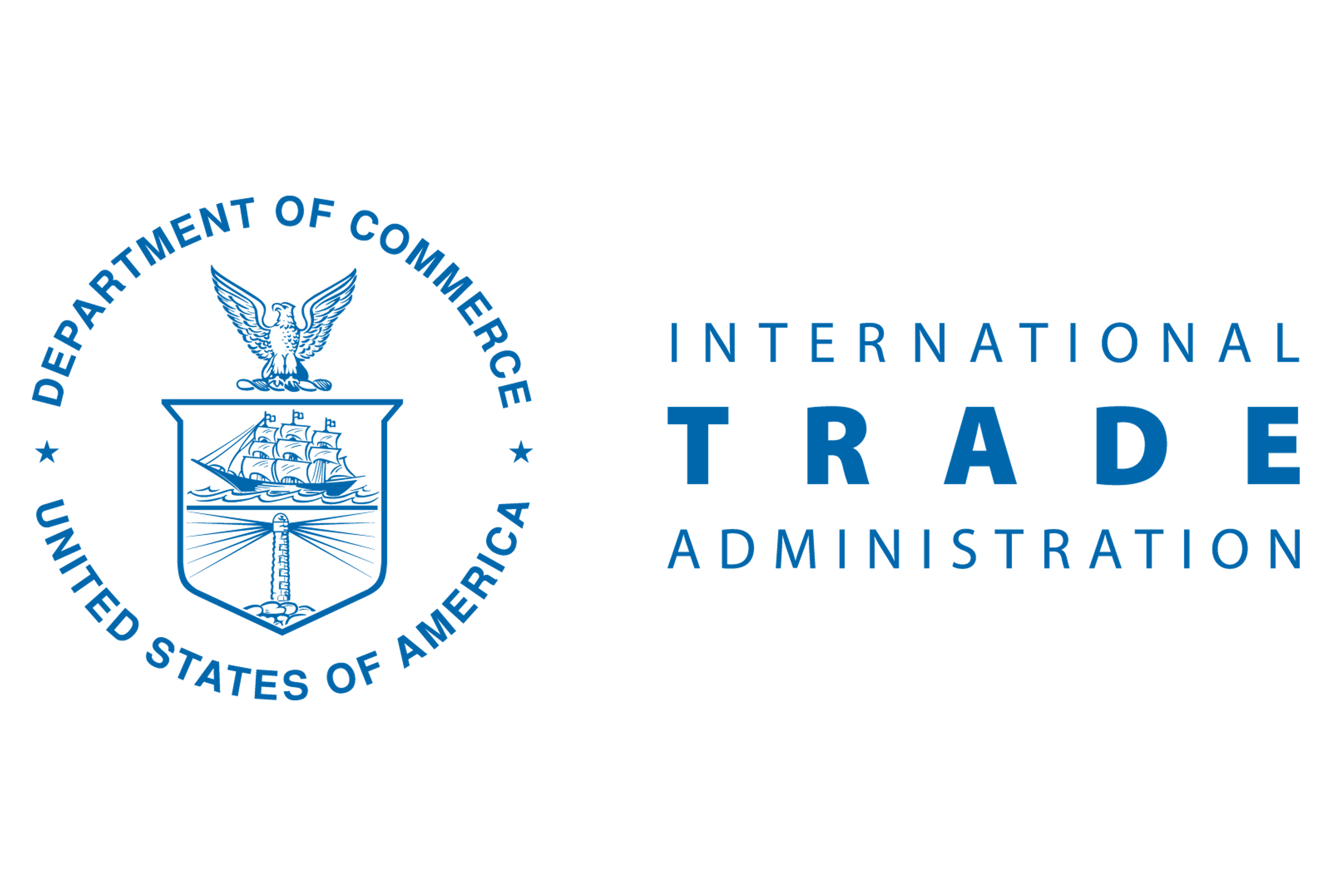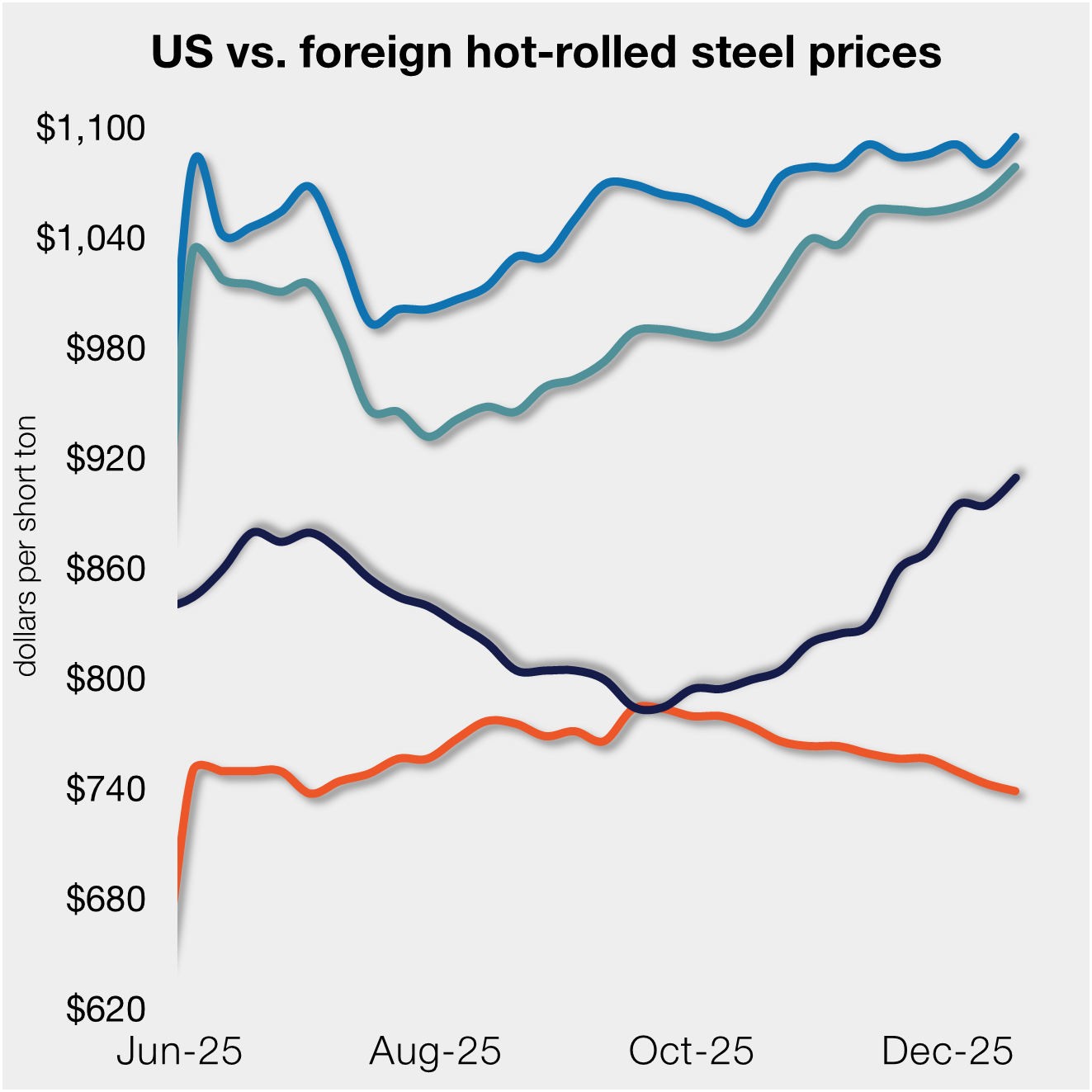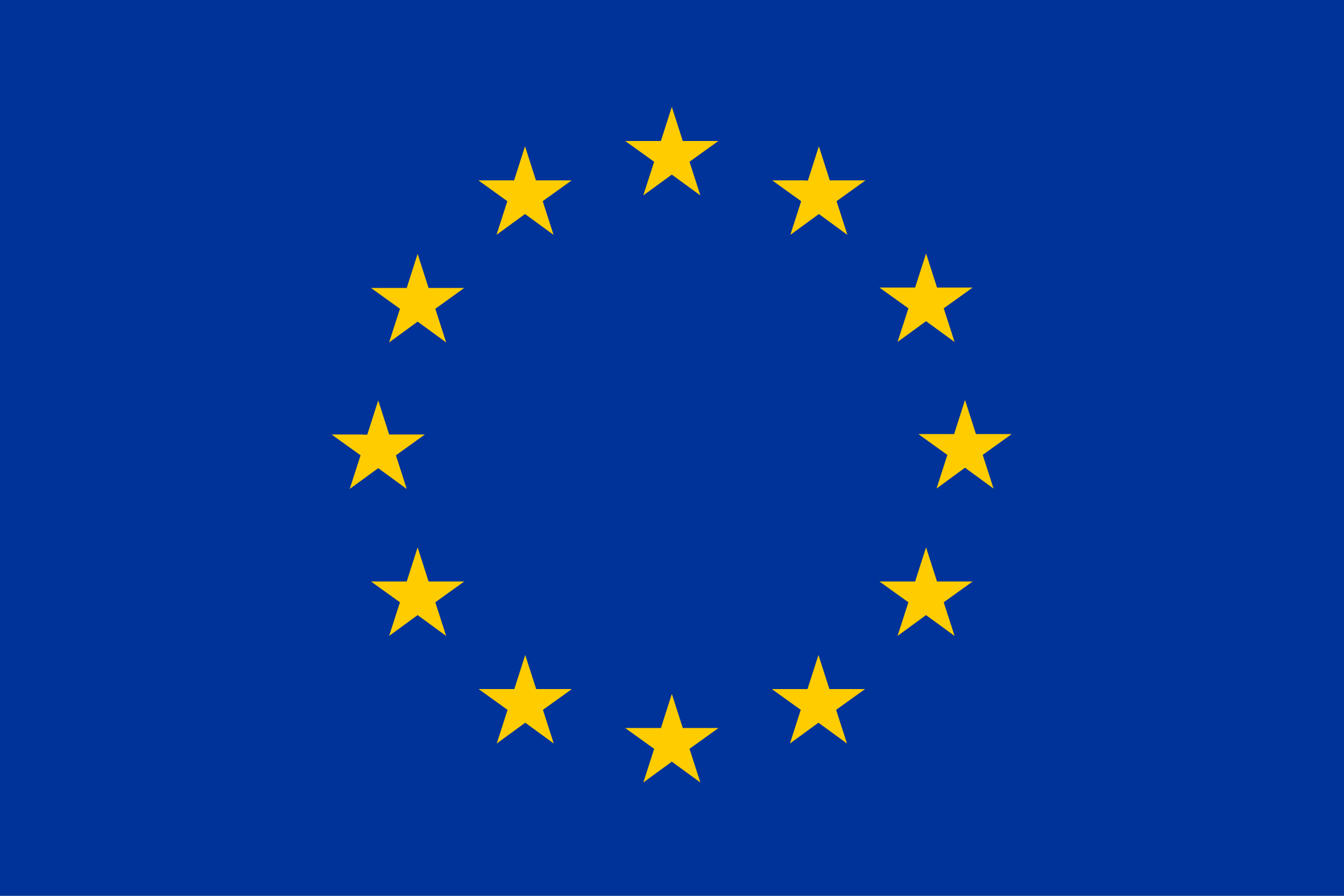Overseas

November 2, 2023
Gap Widens Between US and Foreign Hot Band Prices
Written by David Schollaert
US hot-rolled coil (HRC) tags moved higher again this week, widening the gap in pricing between imported offshore product.
The trend continued as domestic prices increased for a fifth consecutive week while import prices have been largely uneven, according to SMU’s latest foreign vs. domestic price analysis.
Domestic sheet tags have been strengthening in response to repeated mill price hikes, the latest of which saw U.S. Steel, Cleveland-Cliffs, and ArcelorMittal push prices up another $100 per ton over the past week, with the latter two officially targeting a $900 per ton base on HRC.
Before the flurry of price increase notices, US hot band had been on a six-month slump.
This week, US HRC tags increased by $40 per ton ($2 per cwt) from the week prior to $810 per ton. Prices have now increased by $165 per ton from their lowest point of the year, $645 per ton, in late September.
Import prices, in contrast, have been largely trending downward since late April, despite some marginal improvement as of late. The result: Imported product is now nearly 14% cheaper than domestic material once freight and other costs are accounted for. That’s a shift from just five weeks ago when imports were nearly 11% more expensive.
Methodology
This is how SMU calculates the theoretical spread between domestic HRC prices (FOB domestic mills) and foreign HRC prices (delivered to US ports): We compare SMU’s US HRC weekly index to the CRU HRC weekly indices for Germany, Italy, and East and Southeast Asian ports. This is only a theoretical calculation. Import costs can vary greatly, influencing the true market spread.
We add $90 per ton to all foreign prices as a rough means of accounting for freight costs, handling, and trader margin. This gives us an approximate CIF US ports price to compare to the SMU domestic HRC price. Buyers should use our $90-per-ton figure as a benchmark and adjust up or down based on their own shipping and handling costs. If you import steel and want to share your thoughts on these costs, please don’t hesitate to get in touch with david@steelmarketupdate.com.
Asian Hot-Rolled Coil (East and Southeast Asian Ports)
As of Thursday, Nov. 2, the CRU Asian HRC price was $508 per ton, up $9 per ton from the previous week. Adding a 25% tariff and $90 per ton in estimated import costs, the delivered price of Asian HRC to the US is approximately $725 per ton. The latest SMU hot rolled average for domestic material is $810 per ton.
The result: US-produced HRC is now theoretically $85 per ton more expensive than steel imported from Asia.
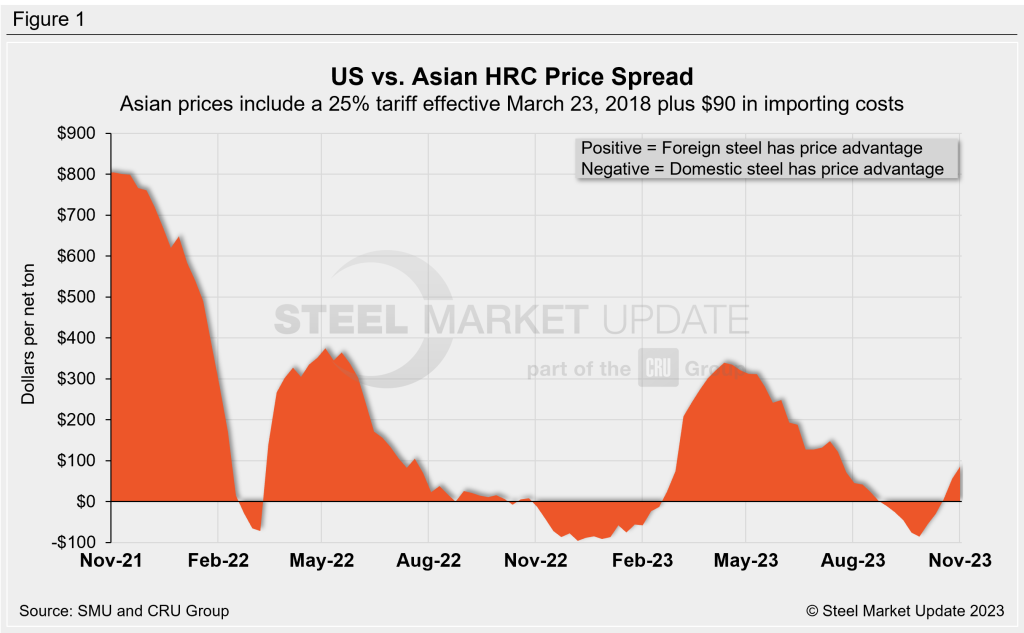
Italian Hot-Rolled Coil
Italian HRC prices slipped by just $1 this week to roughly $578 per ton. They are also down $24 per ton over the past month. After adding import costs, the delivered price of Italian HRC is in theory $668 per ton.
That means domestic HRC is now theoretically $142 per ton more expensive than HRC imported from Italy. That’s nearly a $200-per-ton swing from late September when US prices were $49 per ton cheaper than prices for Italian hot band.
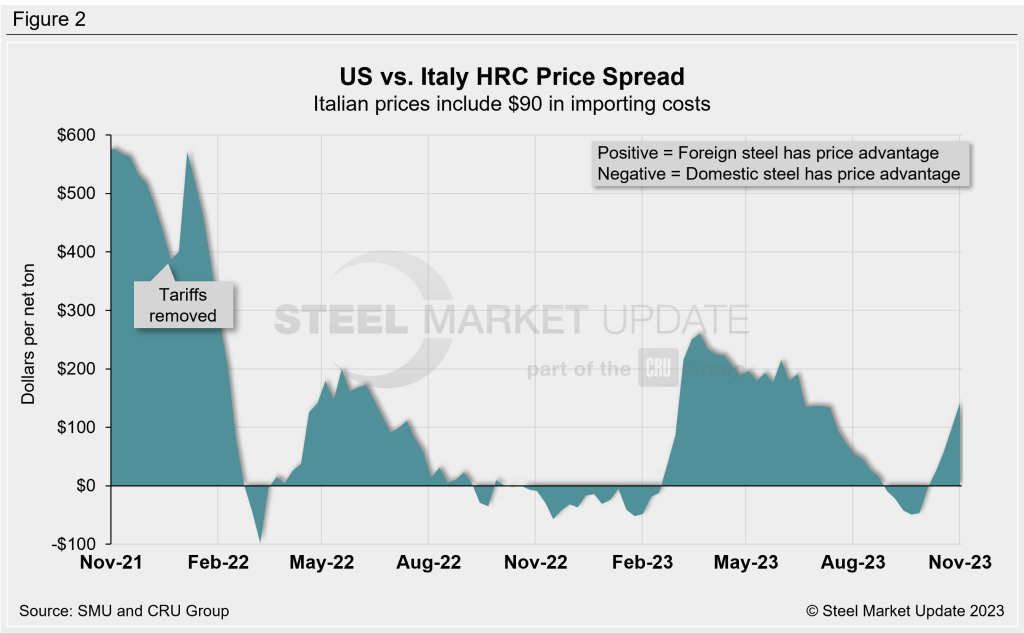
German Hot-Rolled Coil
CRU’s German HRC prices increased by just $2 per ton WoW to $615 per ton. After adding import costs, the delivered price of German HRC is in theory $705 per ton. The result: Domestic HRC is now theoretically $105 per ton more expensive than HRC imported from Germany.
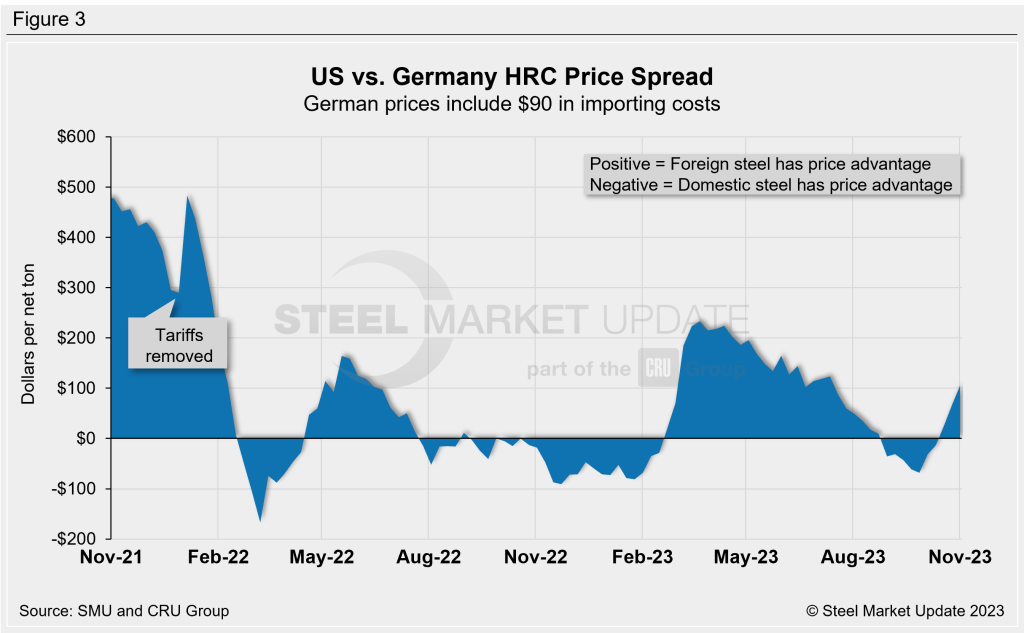
Figure 4 compares all four price indices. The chart on the right zooms in to highlight the difference in pricing from the second quarter of this year to the present.
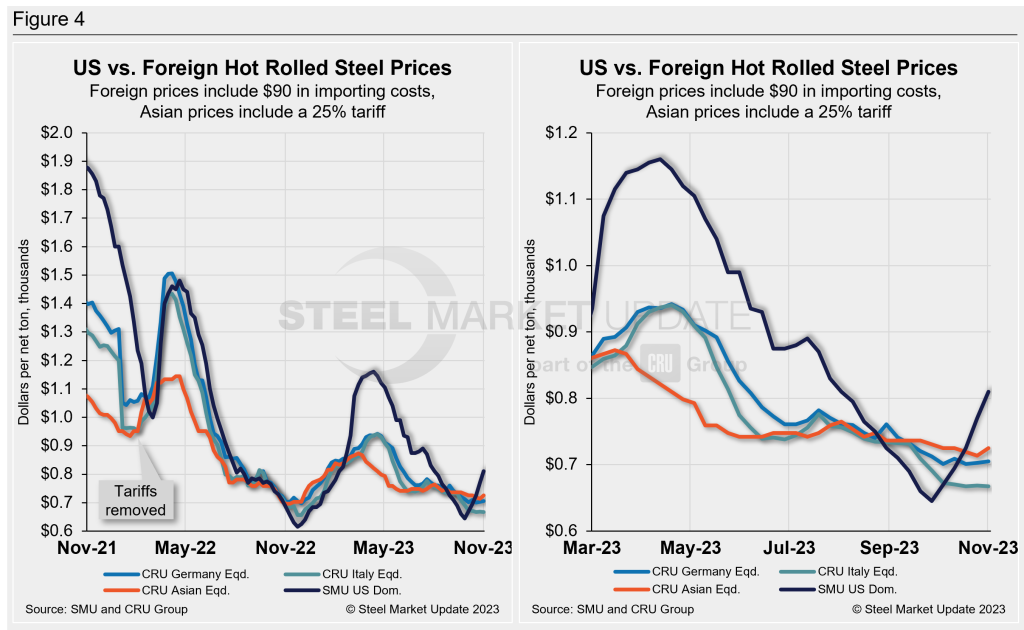
Notes: Freight is important in deciding whether to import foreign steel or buy from a domestic mill. Domestic prices are referenced as FOB the producing mill, while foreign prices are CIF the port (Houston, NOLA, Savannah, Los Angeles, Camden, etc.). Inland freight, from either a domestic mill or from the port, can dramatically impact the competitiveness of both domestic and foreign steel. It’s also important to factor in lead times. In most markets, domestic steel will deliver more quickly than foreign steel.
Effective Jan. 1, 2022, the traditional Section 232 tariff no longer applies to most imports from the European Union. It has been replaced by a tariff rate quota (TRQ). Therefore, the German and Italian price comparisons in this analysis no longer include a 25% tariff. SMU still includes the 25% Section 232 tariff on foreign prices from other countries. We do not include any antidumping (AD) or countervailing duties (CVD) in this analysis.




